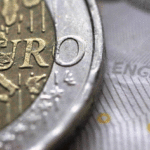 Yesterday’s trade saw EUR/USD within the range of 1.0869-1.0966. The pair closed at 1.0934, dipping 0.03% on a daily basis. On July 21st the cross climbed as high as 1.0970, which has been the highest level since July 15th, when a high of 1.1036 was reported.
Yesterday’s trade saw EUR/USD within the range of 1.0869-1.0966. The pair closed at 1.0934, dipping 0.03% on a daily basis. On July 21st the cross climbed as high as 1.0970, which has been the highest level since July 15th, when a high of 1.1036 was reported.
At 6:49 GMT today EUR/USD was down 0.01% for the day to trade at 1.0928. The pair touched a daily low at 1.0922 during Asian trade.
Fundamentals
Euro area
Consumer Confidence Index – preliminary estimate
Confidence among consumers in the Euro area probably remained little changed in July. The preliminary value of the consumer confidence index probably slipped to -5.68 from a final value of -5.6 in June. If so, this would be the lowest level of confidence since February 2015, when the indicator was reported at a final value of -6.7. The index measures consumer confidence on a scale of -100 to +100. A reading of -100 suggests a lack of confidence, zero means neutrality and a reading of +100 indicates extreme levels of confidence. The index reflects the level of optimism, which consumers have about economic development in the region. The Business and Consumer Survey is conducted by phone and includes 23 000 households in the Euro area. The questions asked stress on current economic and financial situation, savings intention and also on expected developments regarding consumer price indexes, general economic situation and major purchases of durable goods. This indicator is one of the five major components, that comprise the Economic Sentiment Indicator (ESI).
Lower confidence usually implies lesser willingness to spend, including large-ticket purchases, while consumer spending is a key factor behind economic growth. Therefore, in case the consumer confidence index went deeper into negative territory, this would cause a bearish impact on the euro. The European Commission is expected to release the preliminary reading at 14:00 GMT.
United States
Initial, Continuing Jobless Claims
The number of people in the United States, who filed for unemployment assistance for the first time during the week ended on July 17th, probably decreased for a second consecutive period, reaching 280 000, according to market expectations, down from 281 000 in the prior week. If so, this would be the lowest number of claims since the week ended on June 19th, when 271 000 claims were reported. The 4-week moving average, an indicator lacking seasonal effects, was 282 500, marking an increase of 3 250 from the previous weeks revised down average.
Initial jobless claims number is a short-term indicator, reflecting lay-offs in the country. In case the number of claims dropped more than projected, this would have a bullish effect on the US dollar.
The number of continuing jobless claims probably rose to the seasonally adjusted 2 225 000 during the week ended on July 10th from 2 215 000 in the prior week. The latter has been the lowest number of continuing jobless claims since the week ended on May 22nd, when 2 196 000 claims were reported. It also represented a decrease by 112 000 compared to the revised down number of claims, reported in the week ended on June 26th. This indicator reflects the actual number of people unemployed and currently receiving unemployment benefits, who filed for unemployment assistance at least two weeks ago.
The Department of Labor is to release the weekly report at 12:30 GMT.
CB Leading Economic Index
The Conference Board Leading Economic Index for the United States probably increased 0.2% in June compared to a month ago, according to the median estimate by experts. In April and May the index rose at a monthly rate of 0.7%, or the sharpest increase since September 2014, when it climbed 0.7% as well.
It encompasses a variety of economic indicators, which signify possible changes in overall economic activity. The index is comprised by the following components: average weekly hours in manufacturing, average weekly initial claims for unemployment insurance, manufacturers’ new orders, consumer goods and materials, ISM Index of New Orders, manufacturers new orders, non-defense capital goods excluding aircraft orders, building permits, new private housing units, Stock prices, 500 common stocks, Leading Credit Index, interest rate spread, 10-year Treasury bonds less federal funds, average consumer expectations for business conditions. Better-than-expected performance of the index is usually dollar positive. The Conference Board will release the official data at 14:00 GMT.
Bond Yield Spread
The yield on German 2-year government bonds went as high as -0.210% on July 22nd, or the same high as recorded a day earlier, after which it slid to -0.222% at the close to lose 0.007 percentage point on a daily basis.
The yield on US 2-year government bonds climbed as high as 0.715% on July 22nd, or the highest level since July 2nd (0.716%), and closed at that same level, gaining 3.3 basis points (0.033 percentage point) for the day.
The spread between 2-year US and 2-year German bond yields, which reflects the flow of funds in a short term, widened to 0.937% on July 22nd from 0.901% during the prior day. The July 22nd spread has been the most notable one in more than one month.
Meanwhile, the yield on German 10-year government bonds soared as high as 0.785% on July 22nd, after which it slid to 0.753% at the close to lose 2.6 basis points (0.026 percentage point) compared to July 21st.
The yield on US 10-year government bonds climbed as high as 2.342% on July 22nd, after which it slipped to 2.327% at the close to lose 0.004 percentage point on a daily basis, while marking a second consecutive day of decrease.
The spread between 10-year US and 10-year German bond yields widened to 1.574% on July 22nd from 1.556% during the prior day. The July 22nd yield difference has been the largest one since July 20th, when the spread was 1.623%.
Taking into account the period January-June 2015 and basing our calculations on weekly closing prices, we came to the conclusion that EUR/USD performance and the development of the yield spread between 10-year bonds in the United States and Germany showed a correlation of -0.7177, or the pair and the spread moved strongly in opposite directions. As the yield spread grew in favor of the 10-year US bonds, the US dollar gained ground against the euro. During the period January-June, EUR/USD has depreciated 5.73%, while the spread between 10-year bond yields in both countries has widened 2.52% to reach approximately 1.51% in late June from approximately 1.47% in early January.
Pivot Points
According to Binary Tribune’s daily analysis, the central pivot point for the pair is at 1.0923. In case EUR/USD manages to breach the first resistance level at 1.0977, it will probably continue up to test 1.1020. In case the second key resistance is broken, the pair will probably attempt to advance to 1.1074.
If EUR/USD manages to breach the first key support at 1.0880, it will probably continue to slide and test 1.0826. With this second key support broken, the movement to the downside will probably continue to 1.0783.
The mid-Pivot levels for today are as follows: M1 – 1.0805, M2 – 1.0853, M3 – 1.0902, M4 – 1.0950, M5 – 1.0999, M6 – 1.1047.
In weekly terms, the central pivot point is at 1.0951. The three key resistance levels are as follows: R1 – 1.1077, R2 – 1.1323, R3 – 1.1449. The three key support levels are: S1 – 1.0705, S2 – 1.0579, S3 – 1.0333.





